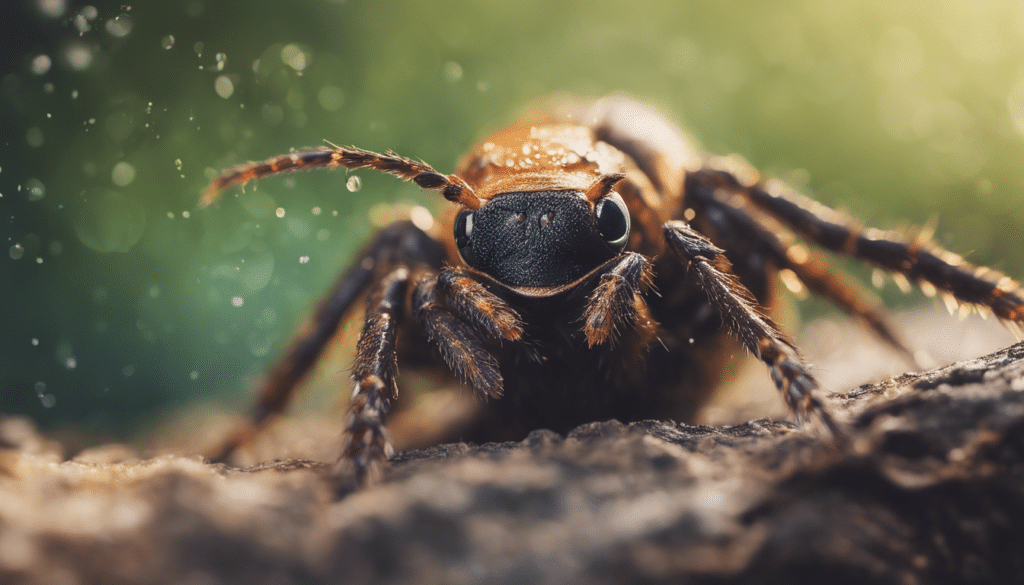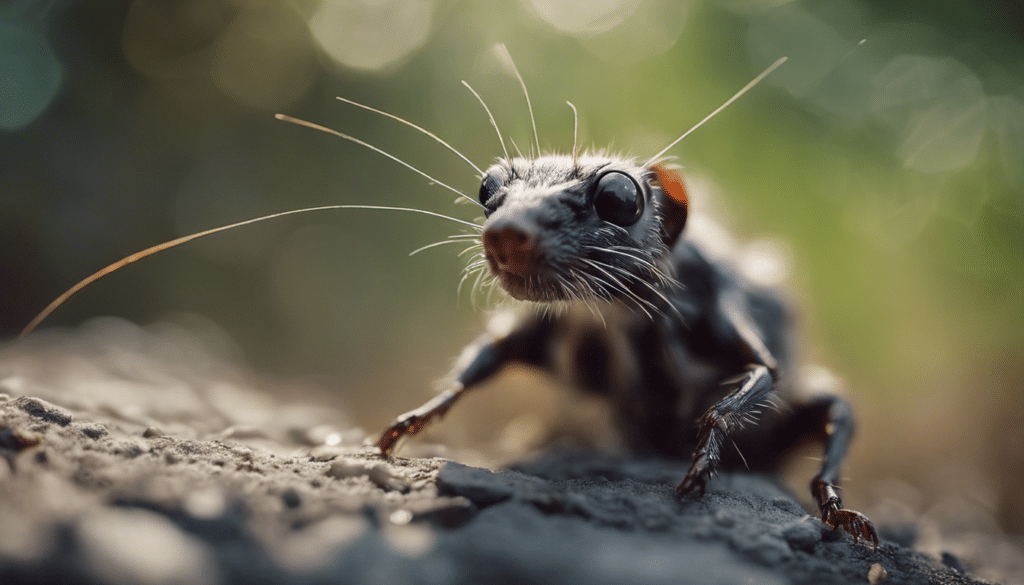Characteristics of Tiny Insect Habitats
Investigating the Diversity of Insect Species
Our planet is home to an astounding variety of insect species, each adapted to thrive in specific niches. These tiny creatures display remarkable resilience and resourcefulness, occupying every conceivable habitat from the dense undergrowth of tropical rainforests to the parched expanses of arid deserts. They form an integral part of the intricate tapestry of life, maintaining the equilibrium of the ecosystems they inhabit.
The Architectural Marvels of Insect Habitats
Insects are master architects, constructing some of the most sophisticated structures in the animal kingdom. Tiny insect habitats are a testament to their ingenious survival strategies. For example, termites build towering mounds that act as climate-control systems, while bees craft geometrically perfect honeycombs for their young and food storage. The characteristics of these habitats reflect the evolutionary adaptations of each species.
Microhabitats: A Closer Look at Insect Living Quarters
Microhabitats play a pivotal role in the lives of insects, offering shelter, food, and breeding grounds. Leaf litter, for instance, provides a moist, nutrient-rich environment for beetles and millipedes. In contrast, the bark of trees creates natural crevices for insects like beetles and ants to lay their eggs and rear their young. These tiny habitats are often complex ecosystems in their own right, hosting a myriad of insect life forms.
The Role of Climate in Shaping Insect Habitats
The climate is a powerful force in defining the suitability and distribution of insect habitats. Temperature and humidity levels directly influence the types of materials insects utilize in construction, their lifecycle events such as metamorphosis, and their day-to-day activities. Some species are even known to engage in seasonal migrations to cope with changing climates, much like their larger animal counterparts.
Adaptations for Survival: Insect Responses to Environmental Pressures
Insects have developed a multitude of adaptations to survive environmental pressures. Camouflage, mimicry, and chemical defenses are just a few examples of how insects have evolved to coexist with predators and competitors. These adaptations not only aid in their survival but also shape the characteristics of their habitats. This is evident in the varying complexity of insect nest structures and the use of environmental materials for camouflage.
Conservation Efforts and Protecting Insect Habitats
With human activities posing a significant threat to various ecosystems, conserving insect habitats has become crucial. Conservation efforts focus on maintaining biodiversity and protecting the intricate lives of insect species that are vital pollinators, decomposers, and a food source for other wildlife. Safeguarding these habitats ensures the preservation of our planet’s delicate ecological balance.
Understanding the characteristics of tiny insect habitats not only fascinates us with the wonders of nature but also highlights the importance of these ecosystems. It serves as a reminder of the intricate connections between all forms of life and the need to protect the habitats that sustain this diversity.
The Lifecycle of Common Small Insects

In the delicate tapestry of our ecosystems, small insects play a monumental role. Their lifecycles are not only fascinating subjects of study but are also crucial for the sustenance of many other life forms. Understanding the lifecycle of these creatures can shed light on the complexity of their existence and inform conservation efforts for larger ecosystems.
Egg Stage – The Genesis of Growth
The beginning of a small insect’s lifecycle is marked by the egg stage. Here, the future insect resides as a tiny, often microscopic, encapsulated organism. The duration of this stage can vary significantly among different species, often influenced by environmental factors such as temperature and humidity.
In certain species, the eggs are laid in carefully chosen locations that provide optimal conditions for survival and development. The number of eggs laid also varies widely, from a few to several thousand, reflecting differing survival strategies among small insect species.
Larval Stage – A Time of Transformation
From the egg emerges the larva, a stage characterized by rapid growth and metamorphosis. Insects such as butterflies and moths are well-known for their larval forms—caterpillars—which undergo several stages of molting as they outgrow their exoskeletons.
- The larvae often have a different diet and habitat preference than their adult counterparts, specializing in consuming large amounts of food to fuel their rapid development.
- Some larval insects are equipped with specialized structures to aid in feeding, defense, and mobility.
- This stage can last from a few weeks to several years, depending on the species and environmental conditions.
Pupal Stage – The Pinnacle of Metamorphosis
In the pupal stage, insects experience a complete transformation. Encased within a protective covering known as a chrysalis or puparium, the larva reorganizes its body structures to emerge as an adult. This stage is a marvel of natural engineering, where tissues are broken down and rebuilt.
This period of metamorphosis is a crucial bottleneck in the lifecycle, often representing a vulnerable phase when the insect is immobile and cannot feed. The duration and complexity of this stage are again variable across species and can be influenced by multiple ecological factors.
Adult Stage – The Apex of Existence
The adult stage signifies the culmination of previous transformations. Adult insects display sexual maturity, and their primary biological imperative becomes to reproduce and ensure the continuity of their species.
Their lifespans at this stage can be astonishingly brief or surprisingly prolonged. Some adult insects are purpose-built for flight, dispersal, or specialized feeding, showcasing an incredible diversity of adaptations. Adults also play key roles in pollination, soil aeration, and as prey or predator in the food web.
In conclusion, the lifecycle of common small insects is a journey through stages of metamorphosis—each distinct yet intricately connected to ensure the survival of the species. Such knowledge is not just an academic pursuit but a critical element in crafting strategies for environmental and wildlife protection.
Roles and Impacts of Small Insects in Ecosystems

The Essential Ecosystem Engineers: Small Insects and Their Roles
In the grand tapestry of biodiversity, small insects play roles far larger than their diminutive sizes would suggest. These creatures are the unsung heroes of ecosystems, performing a myriad of essential functions that sustain the complex web of life. From the soil up through the highest tree canopy, insects can be found buzzing with activity, each species contributing to the environment in a unique way.
One of the most critical roles of these insects is as pollinators. Bees, butterflies, and beetles work tirelessly, flitting from flower to flower, ensuring the continuation of plant life, which in turn supports higher organisms. Without these diligent workers, many plants would fail to reproduce, leading to cascading effects on the food chain and ecosystem stability.
Decomposers constitute another vital faction within the insect community. Species such as ants and carrion beetles break down dead plant and animal material, recycling nutrients back into the ecosystem. This decomposition process enriches the soil, making it more fertile and conducive to plant growth, and thus, supporting the foundational base of many food webs.
Protecting Our Crops: Insect Predators and Pest Control
Insects are also natural pest controllers. Predatory species such as ladybugs, lacewings, and praying mantises keep herbivorous insect populations in check, defending plants from being overrun. In an agricultural context, these beneficial insects are invaluable, helping to protect crops without the need for chemical pesticides that can have harmful consequences for the environment and non-target species.
Fostering a diverse insect population within farmlands can lead to a natural balance, with predators helping to suppress pest outbreaks. By integrating insectary plants into the landscape, farmers can attract beneficial insects, contributing to biological control practices that support sustainable agriculture.
The Foundation of Food Webs: Insect Biodiversity and Its Impact
The sheer variety of insect life forms the base of many food webs, directly or indirectly supporting a range of predators and scavengers. Small mammals, birds, reptiles, and even other insects rely on these prolific breeders for nourishment. The loss of insect diversity can threaten the survival of these higher trophic level organisms, demonstrating the intrinsic link between insect species and overall ecosystem health.
Moreover, the activities of insects often enhance habitat complexity. For example, the burrowing behavior of many beetles and larval stages of insects helps to aerate the soil, improving its structure and water infiltration. This, in turn, benefits plant root systems and curtails erosion, showcasing the insects as pivotal players in maintaining soil health.
Nature’s Little Signals: Insects as Indicators of Ecosystem Health
Insects can act as bioindicators, signaling the health of the ecosystems they inhabit. Certain species are sensitive to changes in their environment, such as shifts in water quality or the introduction of contaminants. A decline in these indicator species can be an early warning of broader ecological challenges, providing scientists and conservationists with critical information to address potential environmental issues.
A close relationship with these small but mighty organisms and a thorough understanding of their roles are essential for anyone concerned with the preservation of natural habitats and species conservation. Ecosystems are finely balanced systems, and insects are central cogs in their machinery. Preserving their populations and understanding their needs can contribute to a more sustainable and flourishing natural world for all its inhabitants.
Indeed, by valuing and protecting our insect allies, we invest in the well-being of the entire ecosystem. It becomes clear that even the smallest insect species are not merely inhabitants of our ecosystems but are fundamental to their structure, function, and resilience. Recognizing the roles and impacts of small insects is a key step in fostering a more harmonious relationship between humanity and the vibrant tapestry of life that sustains us.




